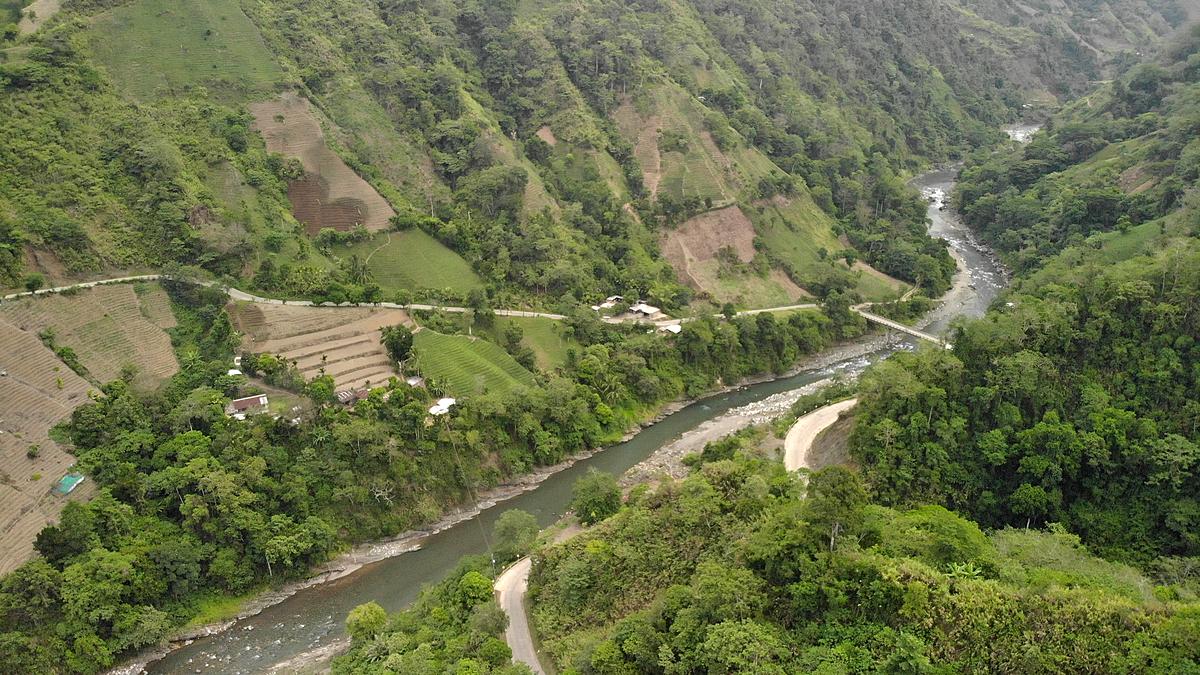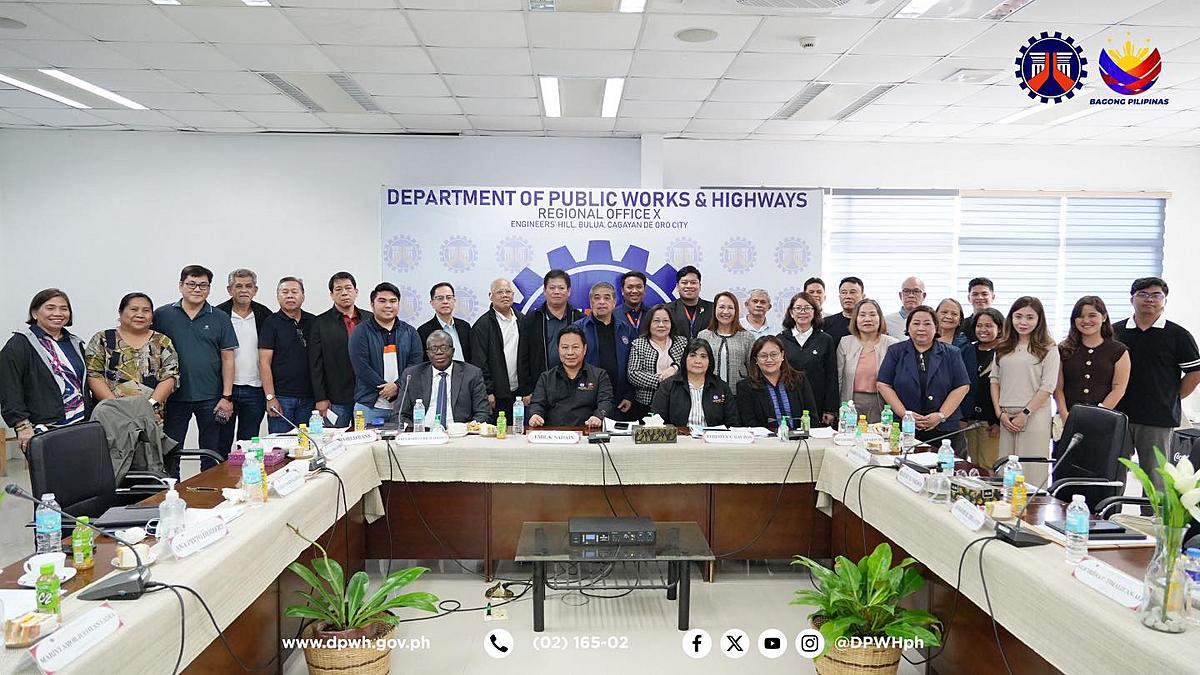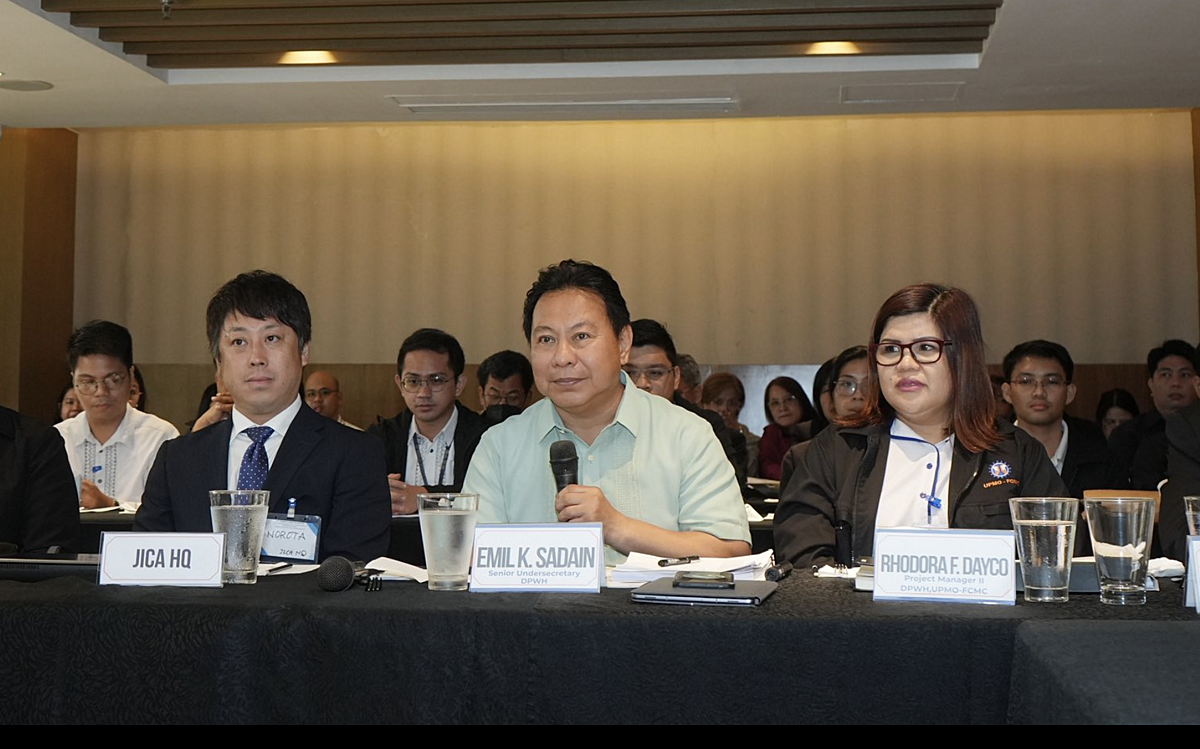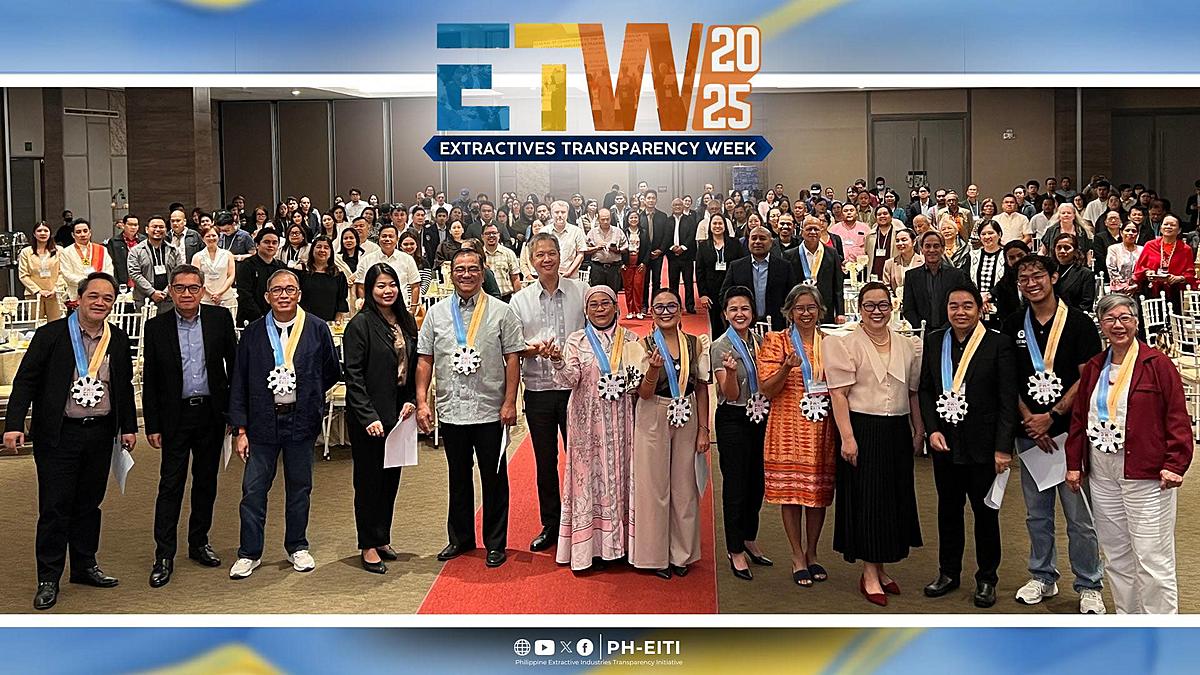The headwaters of Rio Grande de Cagayan. The Kalanguya ethnic community in the mountainous town of Ambaguio in Nueva Vizcaya Province call the rivers "wangwang" in their dialect. Rapid population growth caused the rampant conversion of mountain slopes into agricultural production. Also known as the Cagayan River, it is the longest river and the largest river in terms of volume of discharge in the Philippines. It has a total length of approximately 505 kilometres (314 mi) and a drainage basin covering 27,753 square kilometres (10,715 sq mi). Drone photo by Mike Del Rosario
After two severe weather disturbances that took place in the first half of November 2020 heavily hit eight regions in the Philippines, Pres. Rodrigo Duterte immediately signed Executive Order No. 120 creating the Task Force Build Back Better (TF-BBB) to initiate a comprehensive and integrated recovery.
Cagayan and Marikina valleys suffered the heaviest damage and human casualties as floods and its aftermath landslides placed many parts of the country in a state of calamity for weeks. Typhoon Rolly (international name: Goni) made its landfall on 1 November 2020 and several days after its onslaught and in almost the same path, Typhoon Ulysses (international name: Vamco) carried with it heavy rains as it reached the Philippine shorelines on 11 November 2020.
Tuguegarao and Marikina cities were in deep floods as Ulysses traversed the Philippine area of responsibility. The National Disaster Risk Reduction Management Council reported over 2.3 million people affected across eight regions in the country. Reports indicated that 23,089 individuals displaced were moved to evacuation centres while 46,987 individuals displaced stayed outside evacuation centres. The death toll from Ulysses has reached more than 70. It has severely damaged property and infrastructure in some areas. Videos circulating in social media showed floods reaching the roofs in some parts of Cagayan and Marikina City.
Two agencies, the Department of Environment and Natural Resources (DENR) and the Department of Public Works and Highways (DPWH), were given the lead role in a task force working on an operational mode adopting the “whole-of-society approach”. All government agencies and instrumentalities were mandated by EO 120 to take part.
After eight months of work, the TF-BBB has made significant gains in pursuing rehabilitation and post-recovery initiatives. DENR has realised that problems such as this needs to consider all factors affecting the whole watershed catchment basin where floods occur. Environmental advocates and experts often refer to this approach as the ridge-to-reef initiative.
"In the months since we set out to work in November last year, we have now set into motion significant post-disaster recovery initiatives in three priority geographic areas involving the restoration of Cagayan, Marikina, and Bicol River basins," DENR Secretary and TF-BBB chair Roy A. Cimatu said.
Cagayan River Dredging: Agencies in Action
Cimatu and TF-BBB co-chairperson Secretary Mark A. Villar of the Department of Public Works and Highways (DPWH) led the ceremonial dredging of sandbars along Cagayan River’s constricted midstream and planting of Bamboo seedlings on the riverbank of Barangay Bangag in the town of Lal-lo, Cagayan last 2 February 2021. After removing the sandbar obstacles that impede water from flowing freely, the roots of planted Bamboos should serve as a soil binder to keep the riverbank intact in the future.
There are three priority sandbars to remove near the Magapit bridge, measuring about 235 hectares with an estimated volume of seven million cubic meters, according to TF-BBB statements captured by the media. The first phase of DPWH dredging operations targeted this choke point which a past study identified as the cause of flooding in Tuguegarao City and other settlements near the riverbanks.
TF-BBB in Region 2 is chaired by Regional Executive Director Gwendolyn Bambalan of the DENR and co-chaired by Regional Director Loreta Malaluan of the DPWH. In her message during one of the virtual sessions of the task force, Director Bambalan lauded the different government agencies for their support to the Build Back Better initiatives in the region.
"The regional TF-BBB is not only addressing the protection and conservation of the environment but also the welfare of barangays and families affected by the restoration of the Cagayan River," Director Bambalan said.
In that meeting, the DPWH discussed the dredging operation and riverbank protections works. The Department of Human Settlement and Urban Development gave an update on the status of resettlement projects while the Office of Civil Defence reviewed the improvement of systems and essential services.
The Department of Trade and Industry also presented its accomplishments on livelihood projects. For its part, the Department of the Interior and Local Government presented its agenda for strengthened governance and mainstreaming of disaster-risk reduction and climate change action.
Representatives of the Land Registration Authority also attended the meeting. The LRA will be the partner agency of the DENR for the easement recovery along the Cagayan River.
The Technical Education and Skills Development Authority (TESDA) has trained residents who were eventually hired as laborers and equipment operators to help carry out the dredging operations. TF-BBB has also engaged the Department of Labour and Employment (DOLE) to provide employment assistance to 120 residents for the planting and nurturing of bamboo trees in Tuguegarao City and the towns of Alcala, Enrile, and Gattaran. This will be implemented through DOLE's "Tulong Panghanapbuhay sa Ating Disadvantaged/Displaced Workers" or TUPAD program.
Magat Dam blamed
In many reports published and echoed in mainstream media and social media, the opening of the Magat Dam floodgates was blamed as the cause of flooding. The National Irrigation Administration (NIA) came out with a fact check to clear its liability. Even the Senate initiated moved to investigate the matter. NIA’s acting department manager of Public Affairs and Information Office, Eden Victoria Selva, came up with a comprehensive technical response, explaining that the Magat river is just one of the many river systems draining to the Cagayan River.
“It is noted that the carrying capacity of the Cagayan River is 25,400 m3/s while the maximum volume of water released from the Magat Dam is only 6,706 m3/s indicating that water discharge of Magat Dam due to Typhoon Ulysses is not the main cause of massive flooding in the provinces of Isabela and Cagayan,” Selva said in an article that appeared in INQUIRER.net on 10 June 2021.
The controversial statements blaming the Magat Dam’s release of water also aroused public perception that points responsibility to the occupants of watershed areas in the upstream of Magat River. Those affected by the floods were quick to call for punitive actions against watershed occupants, including calls to ban mining in the province of Nueva Vizcaya, including those issued with legitimate permits to operate.
Sharing the Burden of Watershed Restoration and Protection
In the watersheds upstream of the Magat River, a 10-year project co-funded by the Republic of the Philippines and the Japan International Cooperation Agency is nearing completion. It is called the Forestland Management Project (FMP), a sequel of the several forestry sector projects implemented by the DENR’s Forest Management Bureau in the last 30 years. FMP is a holistic approach in Community Based Forest Management Agreement (CBFMA) areas in sub-watersheds in the upper areas of the Cagayan River, particular the provinces of Nueva Vizcaya, Ifugao and Quirino. FMP is also present in the Upper Pampanga River in Nueva Ecija and in Jalaur River in Iloilo.
Anselmo Cabrera, an Institutional Development Specialist working at the Central Project Management Office of the FMP at the DENR Central Office, has proposed a cost sharing mechanism that Watershed Management Councils should develop for mainstreaming. He said there must be a system where every citizen or institution using water can pay for environmental services performed by duty-bearers protecting and maintaining watersheds.
Through a cost sharing mechanism, communities living in critical watershed areas will be compensated for their efforts to ensure there is sufficient forest cover. With this scheme, upland farmers could minimize soil erosion by planting permanent crops instead of clearing spots to plant vegetables and other short-term cash crops.
The FMP has so far initiated several hundred of hectares planted with coffee, Guyabano, Rambutan, and other fruit bearing trees. About 35 people’s organizations benefitting over 5,000 households, mostly from Kalanguya, Ibaloi, Isinai, Iwak and Ifugao indigenous cultural communities,
LGUs were also called to take a more active role in watershed protection. Cabrera welcomes the favourable result of the Mandanas Ruling, where local governments won in getting their share in revenues collected outside the Bureau of Internal Revenue. The Supreme Court has ruled that LGUs can now get a share from the collection of the Bureau of Customs and other national revenues. Information available from the Department of Budget Management (DBM) revealed LGUs, which include provinces, municipalities, and barangays, could get as much as 37% increase in their internal revenue allotments from the national government in 2022. A DBM advisory directed LGUs to use these additional money to fund the full devolution of services, of which, integrated social forestry is one.
Nueva Vizcaya Governor Carlos M. Padilla made a friendly overture when nasty comments were posted over social media by angry residents of Tuguegarao City who wallowed in deep floods for several days after Typhoon Ulysses. Some people accused people in Nueva Vizcaya of denuding the watersheds. Relief goods from Nueva Vizcaya were immediately sent in flood-stricken areas, a gesture that Cagayan Governor Manuel Mamba deeply appreciated publicly. He also called for collaboration between people downstream and upstream of the Cagayan River to understand and take actions together.
During the last Watershed Management Council meeting, Gov. Padilla reiterated the importance of collaboration and networking to save watershed commons. He recalled a 2018 agreement with stakeholders which includes big water users such as SN Aboitiz and NIA, the two institutions managing the Magat hydropower and irrigation dam in Ramon, Isabela. Also included in the public pledge of support to the 2018 Nueva Vizcaya Declaration on Water are thousands of farmer’s organizations using water resources for irrigation and water utilities, like Solano Water and other entities providing services to majority of urban households.
Watershed Management Councils were potent avenues for collaboration in watershed protection and maintenance. In Davao, a bulk water project implemented by Apo Agua Infrastructura, Inc. mentioned in a webinar that the Watershed Management Council has played a crucial role in mobilising communities and people.
The TF-BBB in Cagayan Valley experience could be one of the best in the current administration’s whole-of-society approach in big projects. By mobilising both government agencies and communities, it has covered all areas of concern from the top of mountain ridges to the reefs in the sea. It would be exciting to measure if the impacts are indeed better ten years from now.








